Pastor Ed Lapiz Day by Day Ministries Cultural Redemption
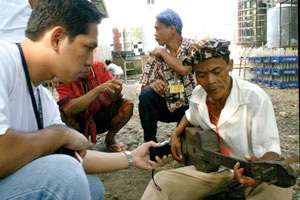





Every member of the team is a researcher. Dancers do not only learn the movements but also study the context of the dance and the meaning of the gestures. A dance is usually a part of a larger ritual of thanksgiving or supplication. Studying this context allows the dancers to internalize the people’s way of life enabling them to execute the movements with body and soul.
A KALOOB research always begins at home. The group equips itself with basic knowledge on the subject before going to the field through intensive library work followed by an orientation on research ethics. Aware that ethno-linguistic groups are the only living repositories of Philippine culture, KALOOB bestows them with high regard. More indispensable than tape recorders, video cams and notepads is a KALOOB researcher’s “kagandahang-loob” (purity of spirit) as he immerses himself in the culture of the people. His sincerity is rewarded as the locals openly share treasured insights behind their music and dances. (Exploitation by some researchers and licentious “theatricalization” by some dance companies has led many indigenous informants to jealously withhold their arts from outsiders.)
The way to learn tribal music and dance is through keen observation. They will dance before the group while the dance researchers follow their lead. Ideally, tight shots of details of arm movements and footwork, and a long shot for whole body movements are captured simultaneously on video. This is done with permission from the informants. It is not uncommon for the mentor to dance and play instruments from start to end several times over because they usually do not have a concept of teaching the dance by dissecting it into, say, parts 1, 2 and 3. Therefore, a KALOOB researcher must patiently follow and keenly watch out for the parts that are of paramount importance.
Interviews are conducted with much care. Permission is always sought first before using a tape recorder. Every interview session is audio-labeled with I.D. (i.e. date, location and subject of interview) for easy reference. Names and other basic demographic details are asked of the interviewee as the researcher jots down the same on paper.
KALOOB researchers are briefed to be extra sensitive to the sources whose knowledge may have been handed down through oral tradition. The rule, therefore, is to spell a word as you hear it. Neither is it surprising when the informants cannot give their birth dates. So evident is their essence of “timelessness” that they would usually refer to the position of the stars, or refer to a major event in their history as the time they were brought forth into the world.
Details of clothing are also documented as well as the proper way to wear it. Rules are carefully noted since there are instances when a particular weave pattern is meant to be worn only by certain social classes or persons.
If available, a complete set of clothing apparel, as well as accessories and musical instruments from the cultural community is usually acquired both for reference and showcasing.
KALOOB is committed to acquire first-hand research materials for the sole purpose of being able to represent every Filipino indigenous group correctly on stage for the promotion and appreciation of the Filipino culture and to bring back respect to our indigenous peoples. As such, and in such a manner, KALOOB continues to pursue every possible opportunity for research.

By Joy Godornes Pagaduan

KALOOB employs its own research methodology. A KALOOB research team is composed of at least one male and one female dancer tasked to study the steps, a musician who does the instrumentation, a chronicler in-charge of studying the history and culture of the people, and a video/camera man.

The author in a Kaloob research mission in Benguet in 2002, documenting Bontoc dances.
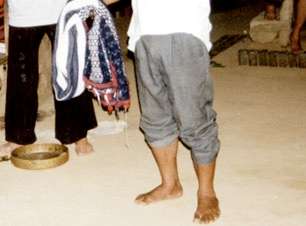
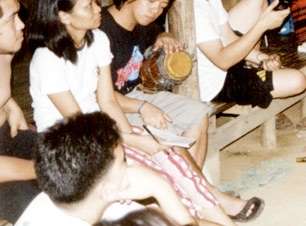
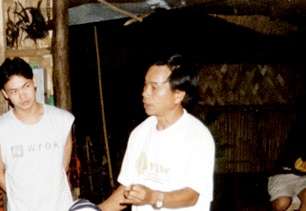
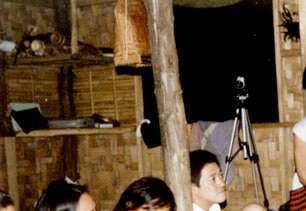
Pastor Ed Lapiz Day by Day Ministries Cultural Redemption









While the insignia of KALOOB can be taken as a graphic representation of a person dancing, it is actually an ancient Tagalog script for the syllable “KA”. The point above it gives it the form of a dancing person. In the Filipino language, “KA” connotes a sharing that promotes oneness. KALOOB uses dance to promote a unified understanding of a diverse culture. Integral to the mission and vision is the establishment of a true Filipino identity that is defined by a solid cultural heritage.









